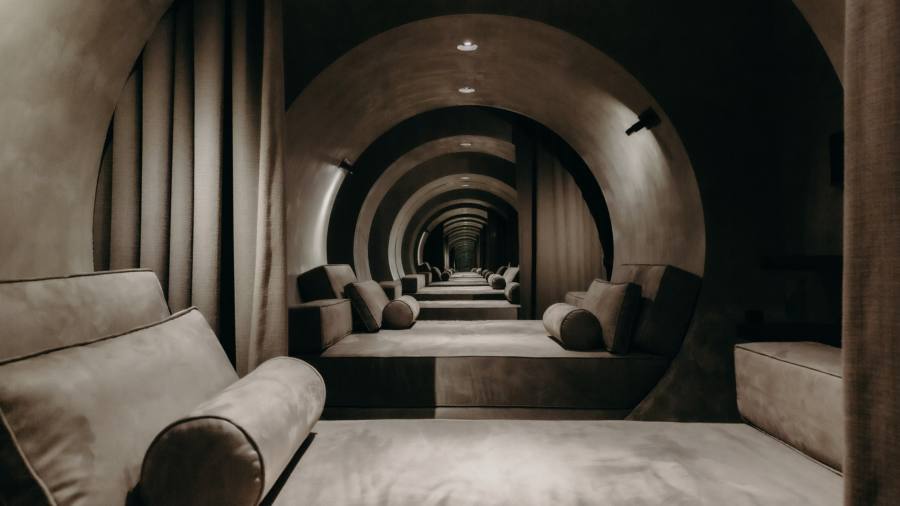
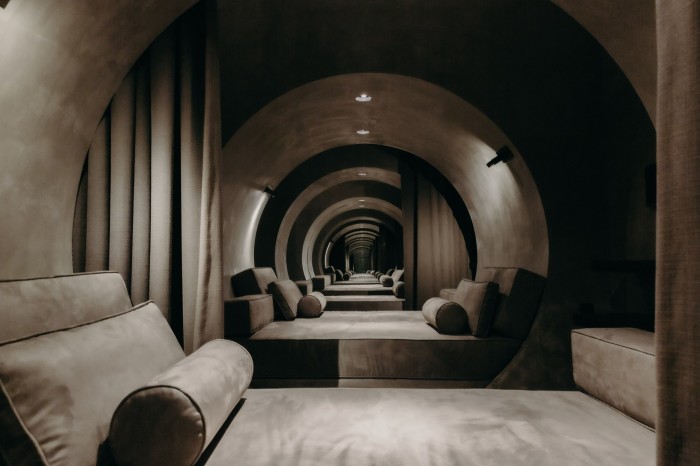
I’ve never been to a member’s club quite like Remedy Place, which opened last month in Manhattan’s Flatiron neighbourhood. It is a greige cocoon of taupe carpets and putty-coloured daybeds, with every inch of its 7,200 square feet engineered for health optimisation.
The sound system emits both lounge music and inaudible frequencies designed to activate the parasympathetic nervous system. Palo santo and sage are diffused throughout the building in an hourly “aromatic design ritual”. The bar, billed as “Toxin and Temptation Free”, sells snacks and drinks infused with ingredients that promise to make you feel better, not worse, from nootropic seltzers to trail mix with adaptogens (natural substances such as ginger and reishi mushrooms, which herbalists use to combat stress).
So far, so peak wellness. But it is beyond the bar, in the bowels of the two-storey building, that things get really interesting. There are IV bags glistening on hooks next to a succession of sleek, mushroom-coloured daybeds. There are lymphatic drainage suits, which look like futuristic sleeping bags, lying dormant in treatment rooms. There is a pair of glass-hatched hyperbaric chambers, which await their passengers like escape shuttles in a sci-fi movie. And every now and then I see a swirl of dry ice from beneath a curtain, in some far off corner, meaning that someone, somewhere, has opened the door to a cryotherapy chamber.
The first branch of Remedy Place, which 32-year-old founder Dr Jonathan Leary describes as “the world’s first social wellness club”, opened in 2019 in Los Angeles, and was a hit with sports stars and celebrities including the Kardashians. It recently raised $5mn from an eclectic list of private investors including Russian-German DJ Zedd, Australian electro band Rüfüs Du Sol and NFL player Marcedes Lewis.
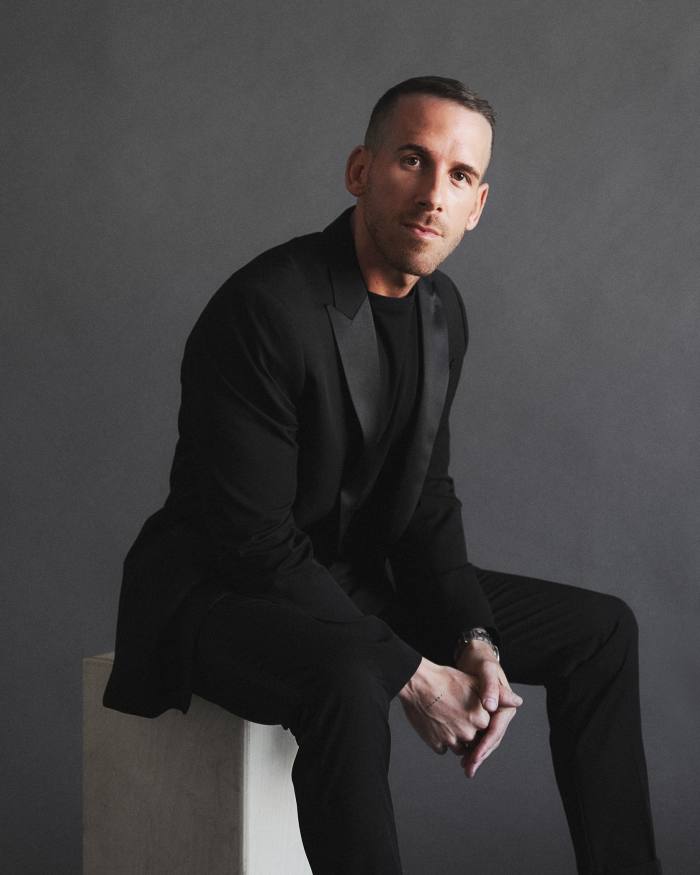
The Remedy Place concept pairs wellbeing with “human connection”. The idea is to go there for date night, or a corporate event, while dunking in a dopamine-boosting ice bath, rather than while imbibing booze and sugar. All the treatments, says Leary, are designed to put the body “in a better state to do what it does best”. Although this may sound like a repackaging of existing concepts, Leary says that Remedy is decidedly not a spa, because it does not address beauty or relaxation: the focus is on high-tech, holistic and traditional Chinese medicine treatments.
Leary, who holds a doctorate from Southern California University of Health Sciences in Chiropractic Medicine and Alternative Medicine and recently had Remedy tattooed on the back of his hand, truly believes he is at the vanguard of a new era. “Self-care is going to be the new fitness industry; you’re going to see self-care, recovery, preventative care places on every corner,” he says. His investors have told him “if you execute the right way, this could be a billion-dollar company.”
Whether or not world domination comes to fruition, it’s clear that Remedy Place has been precision-engineered to chime with this particular cultural moment. Despite global economic uncertainty, wellness is booming, according to McKinsey, which estimates the category’s global worth as at least $1.5tn and forecasts near-term growth of 5 to 10 per cent annually.
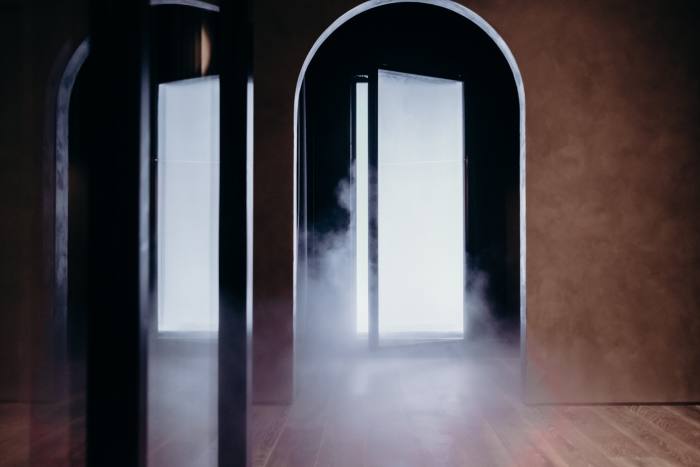
Wellness includes, but is not limited to, fitness, sleep, nutrition, alternative medicine, mindfulness and beauty treatments. None are new considerations but myriad factors have collided to make such concerns freshly profitable, including increased openness about mental health, rising knowledge about sleep issues, and a shift in the “boundary between ‘consumer’ and ‘healthcare’”, says McKinsey partner Anna Pione. Covid has accelerated interest: “It’s made a lot of people just very conscious of their health and their mortality,” she says.
For all its potential, wellness is also controversial. Companies such as Goop — perhaps the world’s most famous wellness empire — have frequently faced accusations of false promises. In 2018 Goop paid $145,000 to settle a lawsuit over health claims pertaining to essential oils, and jade and quartz vaginal eggs (the company admitted no wrongdoing).
The science is certainly complicated. Most of Remedy Place’s treatments — infrared saunas, cryotherapy, cold water immersion, acupuncture — have only limited, if promising, studies behind them, and only the lymphatic massage suit, BallancerPro, is FDA cleared. Though there are limited studies showing Vitamin C IVs’ effectiveness in reducing fatigue and inflammation, the research behind IV Drips is not robust and many medical experts would discourage their use in otherwise healthy patients. And there are no studies I could find that confirm any of these treatments’ use for hangovers — though this is something many clients come in seeking relief for. (One tells me he swears by a multivitamin IV drip and an infrared sauna as his Sunday morning cure-all.)
Still, Leary stands behind everything he offers and says he is his own best case study. He uses all of the treatments including NAD (nicotinamide adenine dinucleotide) injections, which he self-administers five days a week and calls “a fountain of youth”. “Everything is in the club because I have used it with my patients for over seven years,” he says, adding that he hopes to use the business as a foundation to fund studies into alternative medicine.
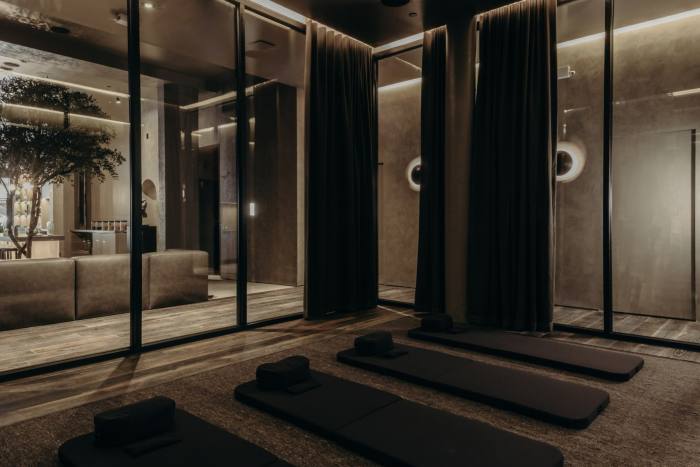
Such debates will probably be familiar to Remedy Place clients. They are likely to fall into a customer segment McKinsey calls the “wellness enthusiast”: big earners who make up 13 per cent of the population but are responsible for 25 per cent of spending within the category.
The clients I spoke to seemed to fit this template. Matthew McFate, a 27-year-old actor/singer/writer/producer based in LA, visited because he had been researching Ear Seeds (a traditional Chinese medicine treatment using pressure points on the ears) and wanted to try it. Another, Nic, who pays $595 for monthly membership in Manhattan, was attracted to Remedy Place for cryotherapy, which he has done regularly since his days as a college athlete. Another big draw, he says, is having a place to work, with some health benefits and structure, after two years of working from home. “New York apartments are not big — it doesn’t matter how much money you have — and that’s not ideal for mental clarity.”
The day I visited the club the place skewed young and male. The price (from $595 to $2,750 a month, although non-members can visit for ad hoc treatments) is of course self-selecting, as is the Flatiron location, home to many tech and finance start-ups. Everyone I saw at the club seemed well-heeled and a bit giddy, from the therapist who told me working there had changed her life, to the two fiftysomething men who emerged glowing from the ice bath class and told me I had to do it.
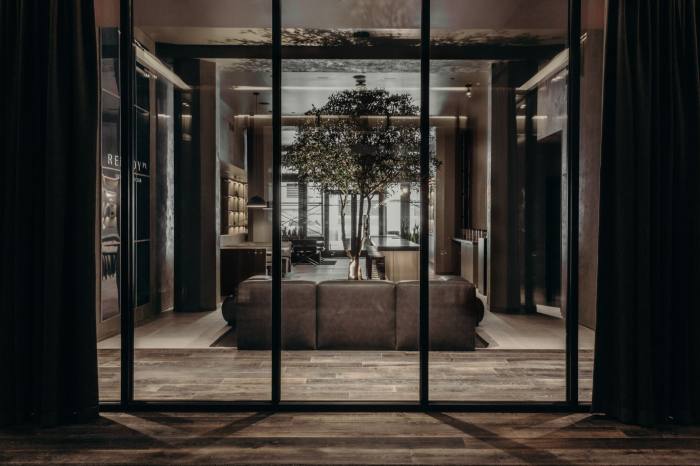
That afternoon my two sisters-in-law arrived to try the ice bath class with me. It was pretty simple: 10 minutes of deep breathing on a yoga mat, followed by a very cold, mind-over-matter six-minute dip in frigid water, then wrapping up, with chattering teeth, in a towel, and sharing a cup of tea and a sense of achievement.
For the next 48 hours I kept asking myself: do I feel different? Is that dopamine, spiking? Do I have a bit more energy? I honestly have no idea. I’m not in the right demographic to pay $2,000 a month for membership, nor the $50 à la carte ice breath class, but I see the appeal. It was just as bonding as a night out, and without a hangover afterwards.
Follow @financialtimesfashion on Instagram to find out about our latest stories first